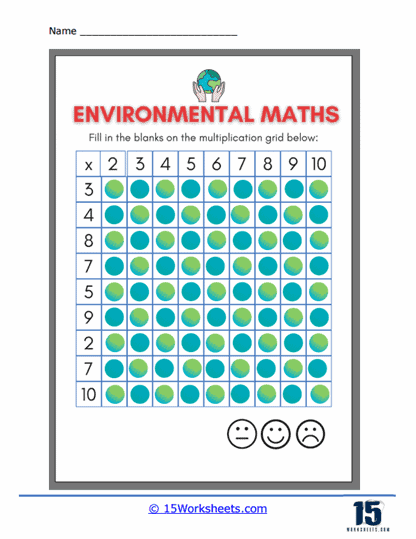Multiplication Charts Worksheets
About These 15 Worksheets
Multiplication charts worksheets are educational tools used primarily in elementary and middle school to teach and reinforce the concept of multiplication—a fundamental arithmetic operation that combines addition and repeated counting. These worksheets are integral to building a strong mathematical foundation and are often introduced after students have mastered basic addition and subtraction. They are designed to help students memorize multiplication tables, usually from 1 to 12, which are essential for solving more complex math problems in higher grades.
They offer a range of exercises that cater to different learning styles and can be adapted to the needs of students at various proficiency levels. The regular practice provided by these worksheets is instrumental in helping students develop a firm grasp of multiplication, setting the stage for success in mathematics throughout their educational journey and beyond.
The most common type of multiplication chart worksheet is the grid or table format. This worksheet typically consists of a two-dimensional grid with numbers along the top row and the first column. The intersections of the rows and columns are filled with the products of the respective numbers. Some worksheets provide a complete set of products, serving as a reference tool, while others are partially filled or entirely blank, challenging students to fill in the missing numbers.
Blank multiplication grids require students to write in the product of the intersecting row and column numbers. This exercise not only helps in memorizing the multiplication tables but also in understanding the concept of multiplication as repeated addition. For example, to fill in the product of 3 and 4, students add 4 three times (4 + 4 + 4) or 3 four times (3 + 3 + 3 + 3), resulting in 12.
Another variant is the mixed or scrambled multiplication chart, where the numbers in the rows and columns are not in sequential order. This version forces students to rely on their understanding of multiplication rather than the sequence of numbers, which can help to solidify their recall of multiplication facts.
There are also multiplication charts with themes or specific visual motifs, such as holiday decorations or cartoon characters, designed to engage students by linking math practice with their interests. These thematic worksheets maintain the educational purpose while adding a layer of fun to the learning process.
Color-by-number multiplication worksheets combine art with math. Students solve multiplication problems and use predetermined colors to fill in sections of a picture according to the product they’ve calculated. This type of worksheet is particularly effective for visual learners and can make the practice of multiplication tables more enjoyable.
Timed tests are designed to improve speed and accuracy. Students are given a set amount of time to complete as many multiplication problems as possible. This practice helps students become more efficient in calculating products, which is beneficial for standardized testing and general mathematical agility.
In addition to these specific exercises, some multiplication charts worksheets might include activities that focus on patterns in multiplication. For example, they might highlight the patterns in the products of even numbers or show how multiplying by 10 adds a zero to the end of the original number.
The Benefits of These Worksheets
Practicing with multiplication charts worksheets can help students improve their math skills in several ways:
Memorization – Regular practice with these worksheets helps students memorize multiplication tables, which is crucial for quick mental math and efficient problem-solving in more advanced math topics.
Conceptual understanding – Filling in blank multiplication charts reinforces the concept of multiplication as an array or grid, which can be particularly helpful in understanding the area of shapes and the properties of operations.
Confidence – As students become more familiar with multiplication tables through practice, they gain confidence in their math abilities. This confidence can translate into better performance in math class and less anxiety during tests.
Application – Worksheets with word problems teach students how to apply multiplication in various contexts, improving their ability to use math as a tool for reasoning and making decisions. A strong grasp of multiplication is necessary for learning division, fractions, ratios, algebra, and beyond. Multiplication worksheets ensure that students have the necessary skills to tackle these more complex subjects.















